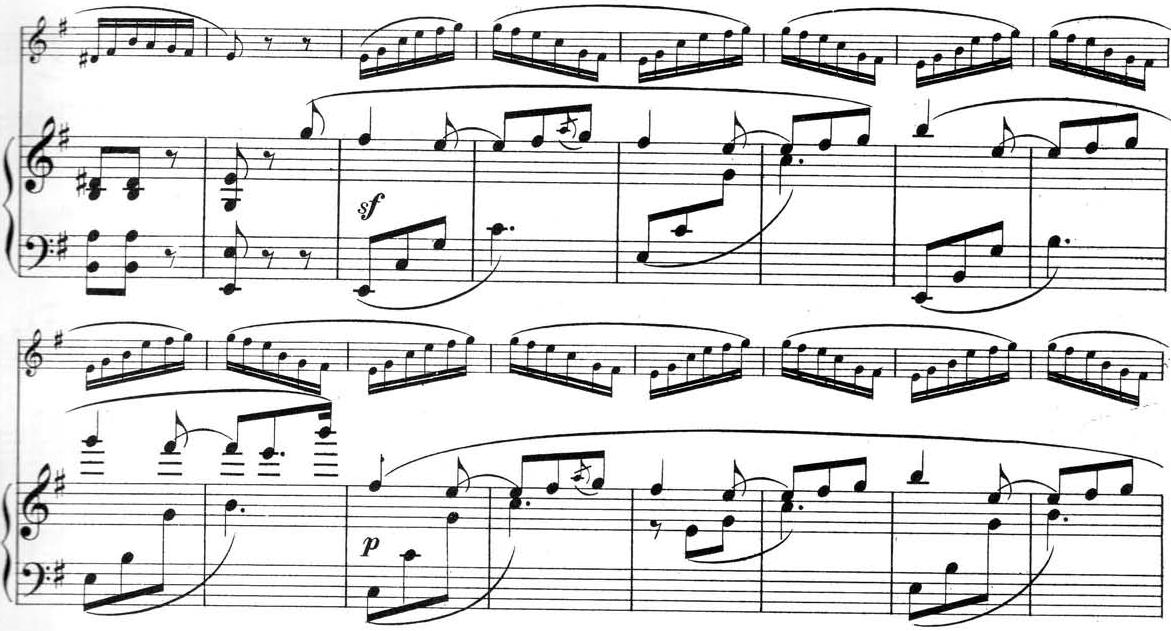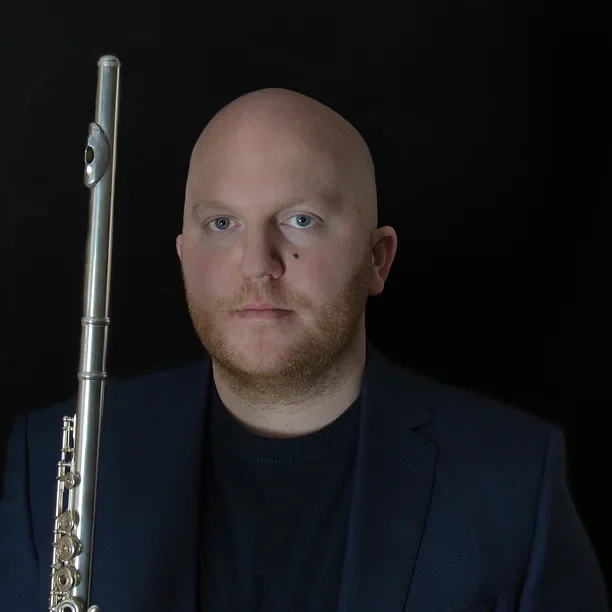
This is probably everyone’s favourite étude – it is certainly the one that gets performed the most outside of the practice room. It’s a triplet tour de force without any breaks, but it also has a very beautiful melodic quality.
Find the Skeleton
If we take away all the decoration and leave the “skeleton” of the melody, this is what we get:

First work on making beautiful phrasing with the melody alone. This melody often reminds me of the 2nd subject in the first movement of Reinecke’s Undine Sonata:

Also, the piano’s melody after the first section and at the end of the Scherzo from Widor’s Suite Op34.

Phrasing
All these melodies share a common melodic shape – an upbeat followed by an appoggiatura. This is a perfect example of an “I love you” phrase. When you say “I love you”, “I” acts as preparation to “love” which is stressed and “you” which is released: I love you. Many people put an undue stress “you” when playing these kind of phrases, which doesn’t make any musical sense. Would you say to your loved one: ” I love you!”?? This might cause them to doubt you! 😉
So when we come back to the Andersen étude, practise it with the following phrasing:

Then apply the same phrasing when you add all the notes. You will also need to do the micro phrasing of the each triplet figure so that we don’t hear emphasis on the accompaniment (especially the low notes, which students often honk out).

Notice how some micro-phrasing is over one quaver beat, and others are over two quaver beats. This tells you how to grade your diminuendo: you don’t want to come away too quickly when it is over two quaver beats, otherwise you will lose the line.
The idea is to show the melody line clearly without elongating each note. This can sound affected and can distort the rhythm. You could also help show the line by giving the melody notes more colour and play the accompaniment notes with a softer colour. If both parts have an equally strong colour and dynamic, the étude just becomes a study in playing a lot of notes, which is both boring and pointless!
If you have the chance, listen to Marcel Moyse practising this étude – he really knows how to make the flute sing. There is a box set released by the Muramatsu flute company of his recordings including his studies and various other pieces that he recorded over the years.
More blogs on the Andersen Etudes Op.15 can be found on Rod’s personal blog: rodfluteblog.wordpress.com



